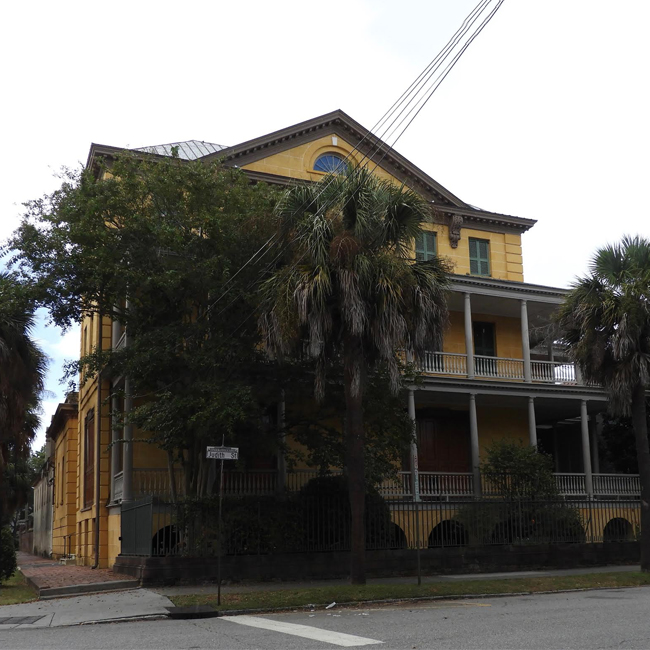
48 Elizabeth Street | Aiken-Rhett House Part I
We will spend the next few posts visiting the area of Wraggborough, a section of Charleston which includes the Charleston Museum which we visited several weeks ago. The property of Wraggborough was owned and named for Joseph Wragg, the father of many children, each of which had a street in the section named for them. Wraggborough includes Elizabeth Street, Mary Street, Ann Street, Charlotte Street, Henrietta Street, Judith Street and John Street.
The house at 48 Elizabeth Street is Wraggborough’s finest and is difficult to miss with its bright, earthy yellow color and size; the house dwarfs the surrounding structures. 48 Elizabeth Street was originally constructed in 1820 as a double house (two rooms wide and two rooms deep) by merchant John Robinson. Unfortunately, several years later, Robinson incurred financial losses to such an extent that he had to sell this house.
48 Elizabeth Street was purchased from Robinson by William Aiken, Sr., President of the South Carolina Canal and Railroad Company. 48 Elizabeth passed to William Aiken, Jr. when his father died in 1830. This house was the primary residence for William Aiken, Jr. and his wife, Harriet Lowndes Aiken; today her full-length portrait has been recently restored and hangs in the house’s art gallery.
The Aikens renovated 48 Elizabeth Street twice. The first renovation occurred in 1833 and changed the entrance from Judith Street to the current entrance on Elizabeth Street. There were revisions to the front rooms on the first floor and a large room added on the east side to be used as a large dining room. The second floor addition immediately above the dining room was designed as a ballroom.
The second renovation occurred in 1857 and added the art gallery to display the fine art purchased by the Aikens during their European travels. The Aikens were wealthy and respected members of Charleston top-tier society, entertaining lavishly and extensively at 48 Elizabeth Street.
William Aiken, Jr. was active in politics, serving as the 61st Governor of South Carolina from 1844-1846. He also served as a member of the United States House of Representatives from 1851-1857.
The house remained in the family until 1975 when the last owner, Frances Dill Rhett, donated it to the Charleston Museum which opened the house as a museum. Twenty years later Historic Charleston Foundation purchased the house and grounds, continuing the operation of the house museum with further conservation and interpretation of the property, including the original slave quarters.
Next week we’ll continue to explore the Aiken-Rhett House and especially the slave quarters in Part II.



